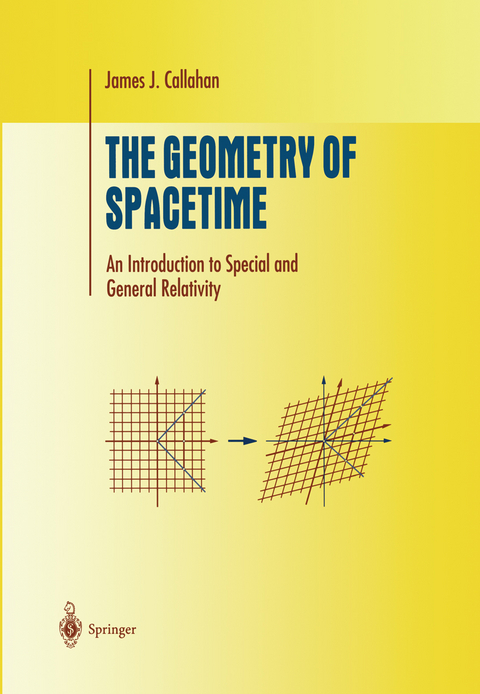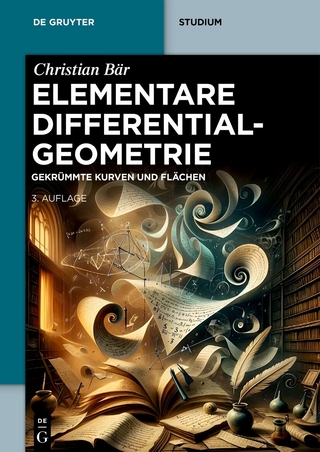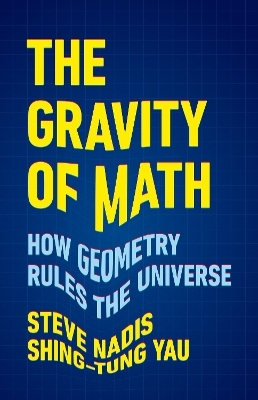
The Geometry of Spacetime
An Introduction to Special and General Relativity
Seiten
2011
|
Softcover reprint of the original 1st ed. 2000
Springer-Verlag New York Inc.
978-1-4419-3142-9 (ISBN)
Springer-Verlag New York Inc.
978-1-4419-3142-9 (ISBN)
In 1905, Albert Einstein offered a revolutionary theory - special relativity - to explain some of the most troubling problems in current physics concerning electromagnetism and motion. The second part develops the main implications of Einstein's general relativity as a theory of gravity rooted in the differential geometry of surfaces.
In 1905, Albert Einstein offered a revolutionary theory - special relativity - to explain some of the most troubling problems in current physics concerning electromagnetism and motion. Soon afterwards, Hermann Minkowski recast special relativity essentially as a new geometric structure for spacetime. These ideas are the subject of the first part of the book. The second part develops the main implications of Einstein's general relativity as a theory of gravity rooted in the differential geometry of surfaces. The author explores the way an individual observer views the world and how a pair of observers collaborates to gain objective knowledge of the world. He has tried to encompass both the general and special theory by using the geometry of spacetime as the unifying theme of the book. To read it, one needs only a first course in linear algebra and multivariable calculus and familiarity with the physical applications of calculus.
In 1905, Albert Einstein offered a revolutionary theory - special relativity - to explain some of the most troubling problems in current physics concerning electromagnetism and motion. Soon afterwards, Hermann Minkowski recast special relativity essentially as a new geometric structure for spacetime. These ideas are the subject of the first part of the book. The second part develops the main implications of Einstein's general relativity as a theory of gravity rooted in the differential geometry of surfaces. The author explores the way an individual observer views the world and how a pair of observers collaborates to gain objective knowledge of the world. He has tried to encompass both the general and special theory by using the geometry of spacetime as the unifying theme of the book. To read it, one needs only a first course in linear algebra and multivariable calculus and familiarity with the physical applications of calculus.
1 Relativity Before 1905.- 2 Special Relativity-Kinematics.- 3 Special Relativity-Kinetics.- 4 Arbitrary Frames.- 5 Surfaces and Curvature.- 6 Intrinsic Geometry.- 7 General Relativity.- 8 Consequences.
| Reihe/Serie | Undergraduate Texts in Mathematics |
|---|---|
| Zusatzinfo | XIV, 454 p. |
| Verlagsort | New York, NY |
| Sprache | englisch |
| Maße | 170 x 244 mm |
| Themenwelt | Mathematik / Informatik ► Mathematik ► Geometrie / Topologie |
| Naturwissenschaften ► Physik / Astronomie ► Astronomie / Astrophysik | |
| Naturwissenschaften ► Physik / Astronomie ► Quantenphysik | |
| Naturwissenschaften ► Physik / Astronomie ► Relativitätstheorie | |
| Naturwissenschaften ► Physik / Astronomie ► Theoretische Physik | |
| Technik ► Maschinenbau | |
| ISBN-10 | 1-4419-3142-2 / 1441931422 |
| ISBN-13 | 978-1-4419-3142-9 / 9781441931429 |
| Zustand | Neuware |
| Informationen gemäß Produktsicherheitsverordnung (GPSR) | |
| Haben Sie eine Frage zum Produkt? |
Mehr entdecken
aus dem Bereich
aus dem Bereich
Gekrümmte Kurven und Flächen
Buch | Softcover (2024)
De Gruyter (Verlag)
54,95 €
how geometry rules the universe
Buch | Hardcover (2024)
Basic Books (Verlag)
31,15 €


